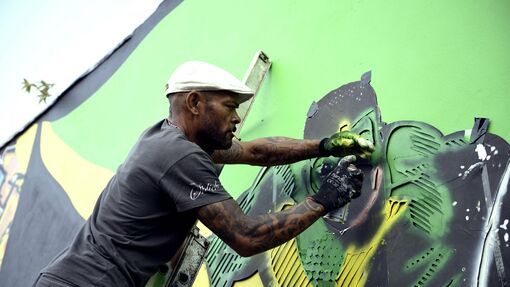
Developing your Creative Practice: Tom Goskar
Thomas Goskar applied for Developing your Creative Practice funding to increase his portfolio of creative work. Thomas is an archaeologist who primarily works as a 3D imaging specialist in the heritage and arts sectors. He works with museums, libraries, societies and artists to help record, interpret and share information in 3D, to inform and inspire people.
His work currently focuses on enhancing features in the landscape in 3D - making them easier to see, understand and access. In his work, he uses creative digital techniques which he himself developed. He has lectured and published widely.
Before the grant, his work on the Giant’s Quoit project in 2014 identified the need for new techniques for the scanning of small objects. This project was a collaboration between artists, poets, archaeologists and musicians to research, react to, and reconstruct a fallen Neolithic monument. A project at Helston Museum in 2017 also highlighted the need to take time out to research, experiment and develop.

“The DYCP grant has allowed me to make a step-change in my career. I’ve always wanted to get better at 3D scanning smaller museum objects. It’s one of the more creative aspects of my work, but I’d never been able to dedicate the time. That’s just what this grant has allowed: time. I’ve had time to practice on plenty of objects, starting with my own, and now I’m testing out those skills in a museum. Several other museums now want to work with me after I’ve finished this project, having seen my work so far.”
Thomas intended to be ambitious in his development and increase his portfolio of creative work, aiming to attract more projects that require a creative approach. This will lead to richer, more human-centred interpretation using 3D technologies.
It is Thomas’ ambition to have the time and space to find out how to scan difficult objects (for example, shiny metal), to try it out, and get good at it. This will involve looking at the creative techniques employed by the gaming industry for their 3D scanning. He will explore non-traditional uses for 3D cultural material, such as Virtual/Augmented Reality. He has been in discussions about creative app development and plans to explore this further. He intends to document and share his findings.

“There have been ups and downs. I’ve been able to purchase specialist software that would otherwise be out of my league. But the software learning curve has been steep, and I’ve spent a lot of time following tutorials. Not everything I’ve scanned has worked, and in some cases I’ve repeated the same object many times to work out what went wrong. But the failures have let to many successes. I’ve been posting my 3D models to Sketchfab, and my model of a pewter goblet was recently featured as a Staff Pick and publicised via their social media channels.”
He felt that this is a good time to undertake this development period, partly because he has identified a gap in skills in scanning difficult 3D objects, and partly because the state of 3D technology is also at the right point. He believes the creative possibilities of 3D in the cultural heritage sector are often misunderstood and underexploited.
Thomas wishes to support museums to embrace this technology as part of collections interpretation, access and marketing work. He also aims to demystify the process from a technological point of view. His long-term goal is to teach these skills and expand his creative output.
Top Tip
“If you apply for a DYCP grant, plan your work as closely as possible and allow yourself some contingency time. I refer to my plan often to make sure I’m on track, but there’s always something unforeseen. I also write a daily journal documenting my methods and recording my experiments with words and photos - it’s invaluable.”
Thinking of applying?
DYCP supports individuals who are cultural and creative practitioners and want to take time to focus on their creative development.







